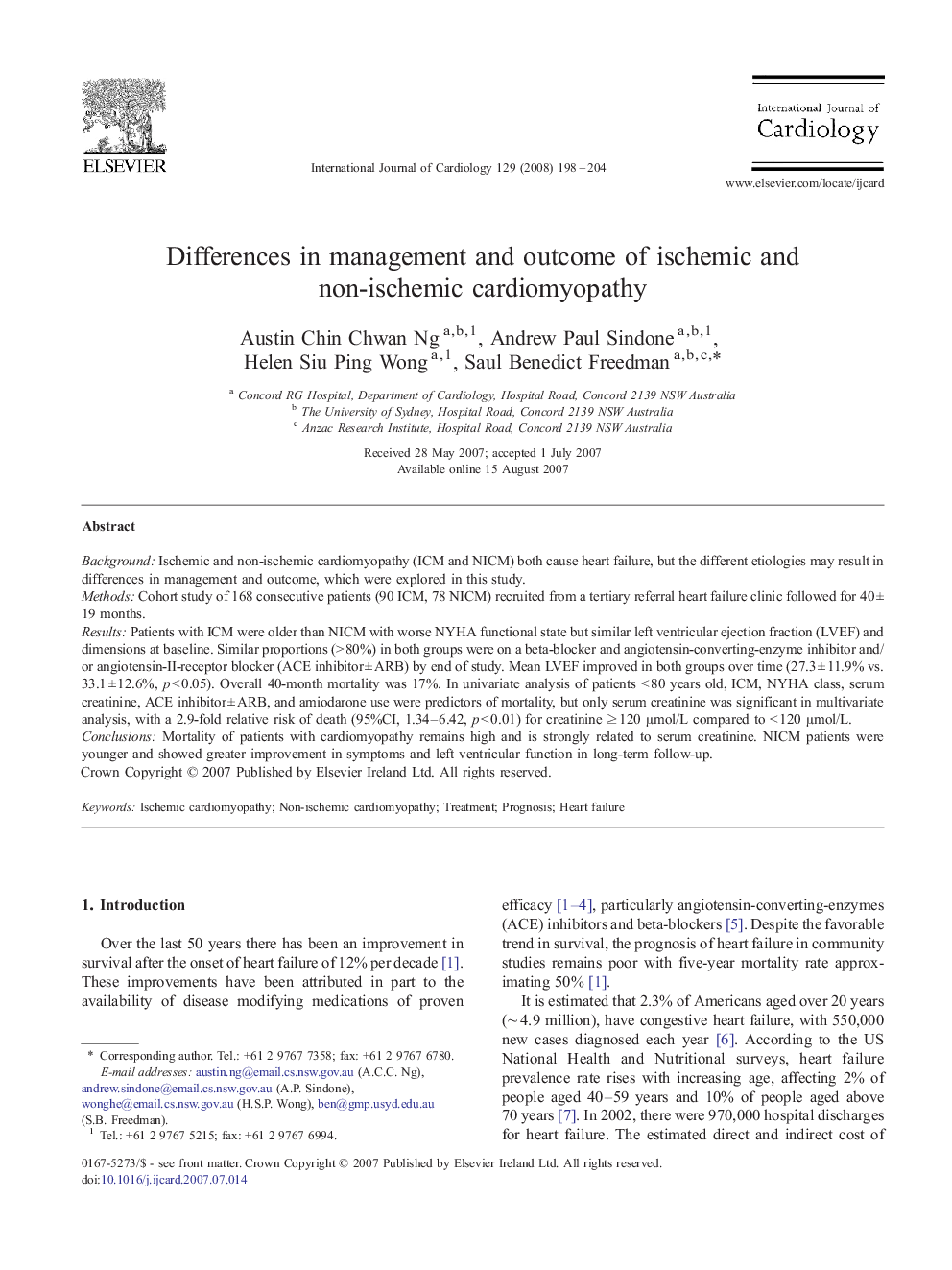| Article ID | Journal | Published Year | Pages | File Type |
|---|---|---|---|---|
| 2934418 | International Journal of Cardiology | 2008 | 7 Pages |
BackgroundIschemic and non-ischemic cardiomyopathy (ICM and NICM) both cause heart failure, but the different etiologies may result in differences in management and outcome, which were explored in this study.MethodsCohort study of 168 consecutive patients (90 ICM, 78 NICM) recruited from a tertiary referral heart failure clinic followed for 40 ±19 months.ResultsPatients with ICM were older than NICM with worse NYHA functional state but similar left ventricular ejection fraction (LVEF) and dimensions at baseline. Similar proportions (> 80%) in both groups were on a beta-blocker and angiotensin-converting-enzyme inhibitor and/or angiotensin-II-receptor blocker (ACE inhibitor ± ARB) by end of study. Mean LVEF improved in both groups over time (27.3 ± 11.9% vs. 33.1 ± 12.6%, p < 0.05). Overall 40-month mortality was 17%. In univariate analysis of patients < 80 years old, ICM, NYHA class, serum creatinine, ACE inhibitor ± ARB, and amiodarone use were predictors of mortality, but only serum creatinine was significant in multivariate analysis, with a 2.9-fold relative risk of death (95%CI, 1.34–6.42, p < 0.01) for creatinine ≥ 120 μmol/L compared to < 120 μmol/L.ConclusionsMortality of patients with cardiomyopathy remains high and is strongly related to serum creatinine. NICM patients were younger and showed greater improvement in symptoms and left ventricular function in long-term follow-up.
